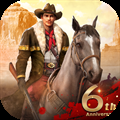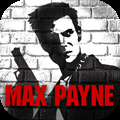5 Among Us Tracker Tips And Tricks To Win - Theria Games
Understanding the Tracker Role
Among Us Tracker Tips and Tricks begin with recognizing that the Tracker role is built for observation, patience, and deduction. This is not a flashy role meant for confrontation—it’s designed to quietly gather behavioral intel that can become game-changing when shared at the right time. The Tracker is a special Crewmate role that allows you to place a tracking device on another player, which gives you real-time updates on their location via your mini map. This tracking does not confirm innocence or guilt directly, but it creates a detailed picture of your target’s movement patterns throughout the match.
To use the Tracker effectively, the first step is choosing your target wisely. Ideally, you want to place your tracker early in the round, when players are beginning to split off and complete tasks. Avoid swapping targets too frequently, as short-term tracking provides limited value. Sticking with one player for a full round or two gives you time to observe consistent behavior—or catch inconsistencies. Watch for signs that don’t add up, such as someone visiting a task location but leaving too quickly to have completed it, or frequently doubling back without reason. These subtle actions can reveal deception, especially when cross-checked with others’ task progress and alibis.
Being a good Tracker also means staying quiet and blending in. You don’t need to follow your tracked player physically; your mini map will handle that. This gives you the freedom to perform your own tasks while monitoring their position. If you spot something suspicious—like a player lingering near where a body is later found—you can bring that information to the next discussion. However, timing is everything. Don’t reveal your role too early unless the information is solid and actionable. Dropping vague accusations with no clear evidence may get you voted out or waste valuable time.
The Tracker shines most when combined with memory and deduction. Pay attention to who dies and when, and think about where your tracked player was during that window. If a kill occurs far from your tracked target’s position, you can often help clear them, which is just as valuable as catching the Impostor. On the other hand, if your target frequently visits areas where bodies are later discovered, or seems to avoid other players while roaming, those are potential red flags worth sharing.
Ultimately, the Tracker’s power lies in collecting long-term movement data that other players don’t see. While others rely on witnessing events firsthand, you’re building a narrative from positioning and patterns. Among Us Tracker Tips and Tricks revolve around this slow, deliberate playstyle—staying observant, asking the right questions during meetings, and presenting movement-based evidence that others may have missed. When used well, the Tracker can quietly shift the balance of the game without ever stepping into the spotlight.
Tip 1: Spotting Suspicious Kill Behavior
One of the most important skills in your Tracker toolkit is learning how to detect when your marked player might have just performed a kill. A sudden and slight jerk in their movement—particularly if they momentarily stop and then quickly veer in a new direction—can signal a kill just took place. Since kills are often followed by a brief animation pause or a moment of hesitation while the Impostor decides what to do next, even the smallest movement anomaly is worth noting. This kind of behavior is especially suspicious if it breaks an otherwise consistent movement pattern, such as heading toward a task but suddenly doubling back for no clear reason.
If this type of erratic movement occurs in a low-traffic area or shortly before a body is reported, there’s a good chance your target is involved. It’s even more telling if they quickly head toward a vent location, hover near a known hiding spot, or avoid intersections where they might cross paths with other players. In some cases, they might even slow down or fake indecision as they wait for their kill cooldown to reset, which can also be a subtle giveaway.
Keep in mind that movement alone isn’t definitive proof, but it’s the kind of clue that, when paired with other odd behaviors—like avoiding tasks, straying from the group, or entering rooms without a reason—can create a strong case during discussions. If you can match a suspicious movement pattern to the time and location of a reported body, it adds credibility to your claims. The more these pieces line up, the easier it becomes to build a convincing argument and sway the vote. As a Tracker, your job is to notice what others overlook, and small anomalies like these are often the thread that unravels a much bigger mystery.
Tip 2: Recognizing When Your Target Is a Victim
Being a Tracker isn’t just about catching Impostors—it can also help identify when your tracked player becomes a victim. If your target suddenly stops moving for an extended period and doesn’t resume activity, especially if they’re in a corner of the map where no tasks typically occur, that could indicate they’ve been killed.
In this situation, head toward their location with caution. If you’re the first one there, you may be able to report the body before the Impostor escapes. This kind of intel is incredibly valuable—reporting a body early can interrupt the Impostor’s game plan and prevent another kill from happening.
Also, pay attention to when you lose the signal of your tracked target. If you notice their location isn’t updating anymore, it could mean they were eliminated or disconnected. In either case, investigate promptly.
Tip 3: Catching Vent Users in the Act
Vents are a hallmark of Impostor mobility, allowing them to vanish from one area and reappear in another. The Tracker role gives you a distinct advantage in spotting this suspicious activity. If your target suddenly appears on a different part of the map without traversing the hallways or passing logical checkpoints, it’s highly likely they’ve used a vent.
This tactic becomes even more powerful when you’re aware that the Engineer role is not present in your lobby. Without Engineers, venting is exclusive to Impostors. In those scenarios, unexpected movement should trigger immediate suspicion. Consistently watching your mini-map for this kind of unexplained travel can expose Impostors who thought they moved unseen.
It’s one of the more technical Among Us Tracker tips and tricks, but one of the most rewarding when used correctly.
Tip 4: Sharing Your Intel Wisely in Discussions
Your observations as a Tracker are only as powerful as your ability to communicate them. When meetings are called—either emergency or after a body is found—your tracking data becomes a valuable narrative tool. If you saw your target near the scene of the crime shortly before the body was discovered, bring it up. If their claimed location doesn’t match what you witnessed via tracking, call them out.
Be ready to explain how you saw them move, when they moved, and why you find it suspicious. Presenting your information clearly and calmly boosts your credibility and helps the crew focus on potential suspects. The Tracker doesn’t give hard evidence, but it provides critical circumstantial proof that can guide votes and create pressure on Impostors to slip up.
Tip 5: Choose the Right Target from the Start
Not all players are equally valuable to track. Choosing the right target early in the game can make a huge difference in how effective your role becomes. The Tracker’s power lies in long-term observation, so the earlier you identify someone worth watching, the more time you have to gather useful data. Watch for players who behave unusually: someone lingering just outside of tasks, rapidly changing direction without purpose, or hovering near groups without contributing. These are often subtle red flags that could indicate either an Impostor trying to stay close to others for alibi protection, or someone pretending to do tasks while actually observing the group.
Body language in the game matters more than people think. For example, players who hesitate at junctions or seem to shadow other Crewmates without engaging in tasks themselves can be worth following. It’s also smart to choose someone who doesn’t speak much during discussions, especially if they’re avoiding attention or giving vague input. Silent players sometimes hope to fly under the radar, making them harder to read. Tracking them gives you a clearer picture of whether their quiet nature is just caution—or a cover for something more sinister.
Alternatively, target someone who seems overly defensive during early accusations or makes vague claims about their whereabouts. When a player scrambles to explain where they were or throws out baseless counter-accusations, it’s often a signal they’re trying to mislead others. By monitoring their movements closely, you’ll either clear them through consistent and believable task completion or catch inconsistencies that expose foul play. Did they say they were in Electrical, but your map shows them circling near MedBay? That’s the kind of contradiction that builds a case.
Strategic selection is one of the most underappreciated Among Us Tracker tips and tricks, but it sets the foundation for a productive game. Tracking a random Crewmate might yield nothing, but choosing a suspicious or unpredictable player gives your role purpose from the start. Over time, a well-chosen target either helps you eliminate suspects or confirms them as innocent, both of which are vital for leading your team to victory.
Final Thoughts
The Tracker role in Among Us introduces a new layer of gameplay that rewards awareness, deduction, and tactical thinking. By keeping a close eye on a single player, you gain insight that few other roles can match. While you won’t have a flashy power like the Sheriff or the Guardian Angel, your information can quietly shape the course of the game—especially when delivered at the right moment.
Mastering the role comes down to knowing what to look for and using that knowledge to guide your team. With these Among Us Tracker tips and tricks, you’ll be well on your way to becoming a highly trusted Crewmate—or at least, someone the Impostors will be afraid to have watching.













